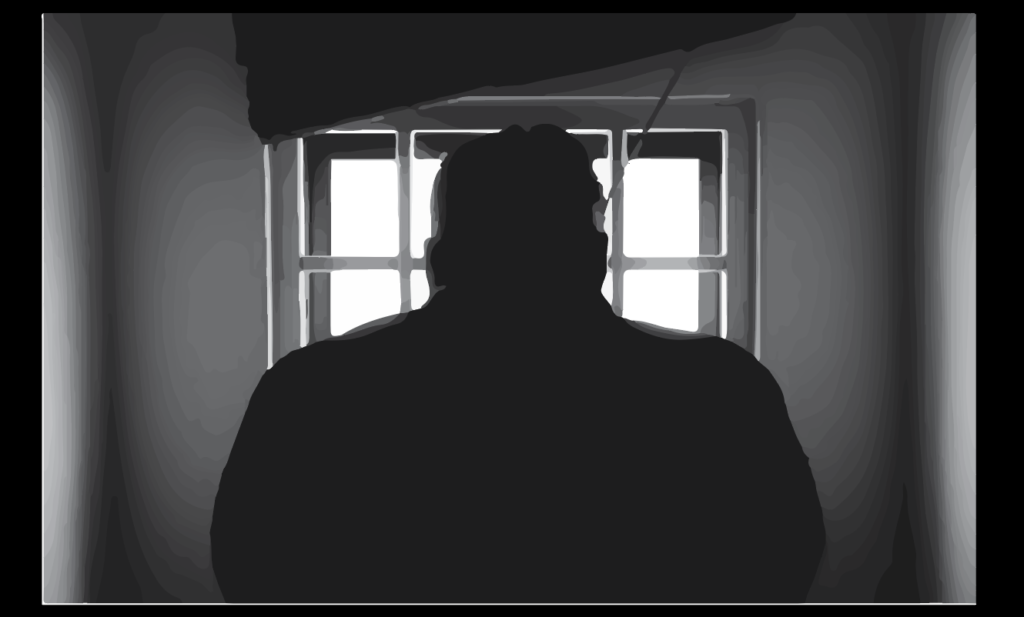
By Abby Poisson
Contributing Writer
As of Dec. 1, there have been 225, 946 cases of COVID in both state and federal prisons throughout the United States; things are not slowing down as hoped.
This past year has been a lot of things for a lot of people: frustrating, overwhelming, devastating, and unprecedented to say the least. As independent beings, we often view the world from a self-centered and self-serving perspective. This year took from many a sense of stability, basic fiscal security, ease in seeing loved ones, and precious moments. It is natural to feel anger.
However, it is important that we acknowledge the ways in which our most marginalized and vulnerable communities have been impacted by this pandemic.
Many different communities and populations have been disproportionately impacted by COVID, one of which is the prison population. As is comprehensible, prisons breed infectious disease, as social distancing measures are inherently more difficult. Prisons generally hold large populations of people who are already at a higher risk for contraction, due to chronic disease or substance misuse.

The six prison facilities within Vermont have ensured that incarcerated individuals are practicing social distancing to the best of their ability, although as one can imagine, distancing within a prison is incredibly difficult.
Vermont prisons had a high rate of infection as of broad testing conducted in August; there have been 200 infected prisoners among just over 1700 total Vermont prisoners. Although in comparison to the national prison rate, Vermont only represents a very small proportion of COVID cases, they still had the highest proportion of their prisoners test positive in August, according to the Council of Criminal Justice.
“The prison system [and the Department of Corrections] in Vermont has been fairly successful in keeping COVID out of its facilities,” said Marybeth Remond, member of Vermont’s House of Representatives.
For a population of people who are already incredibly isolated, the past nine months have been further isolating. According to the CDC, social isolation can correlate with higher risks of depression, anxiety, and suicide. Now take this statistic and compare it to an incarcerated person who has been socially isolated from friends, family, and at times any human being.
“We have to do everything we can to make sure they’re not further isolated,” Redmond said. “There have been tremendous mental health impacts due to increased isolation.”
Prior to COVID, incarcerated people were able to receive in-person visitation by family or friends; however, since the State of Emergency was placed on March 13th, the only means of contact is now through video chat and phone calls. As we might understand from our own experiences, these do not replace in-person communication.
Eighty-five percent of women who are incarcerated are mothers, Redmond said. In fact, “it is estimated that there are more than 2.7 million children who have parents in state and federal prisons. According to the Charles Koch Institute, many of these parents were the sole caretaker for these children before they were incarcerated. COVID has not only impacted parents within the criminal justice system but also their children on the outside. Effectively practicing safe and conscious choices in prison facilities is also to seek to ensure the well-being of children and their reunion with parents.
Since March, rehabilitation and social service programs were put on a hold for these men and women in facilities. While some GED programs are now running again, it is not an adequate replacement for outside social interaction. It is a function of life.
It is for the above reasons – as well as the importance of containment within the prison system and outward into greater communities – that there has been a substantial argument for vaccine distribution to be highly prioritized for the incarcerated. While it is important that the CDC Advisory Committee for Immunization Practices has made recommendations for the vaccination of correctional officers, we cannot forget that incarcerated individuals must also be vaccinated to ensure a greater likelihood against a mass outbreak in facilities.
It is our job to keep them safe, as they are still members of society who are deserving of rights and well-being. These are also people who may potentially rejoin the outside community as productive members of society; 600,000 people are released each year from prisons, both state and federal. Investing in incarcerated people now is to invest in their rehabilitation and reentry into society.
However, there is little more to do for these facilities than to make these continued efforts to keep COVID outside of the bounds of the prison. There is much for us to do, those of us in the outside community, who are capable of making conscious and independent choices around our health and well-being. Think of those who have been impacted in unimaginable ways and then make your choices. Because our choices have and will continue to determine the extent to which this pandemic will reach.

